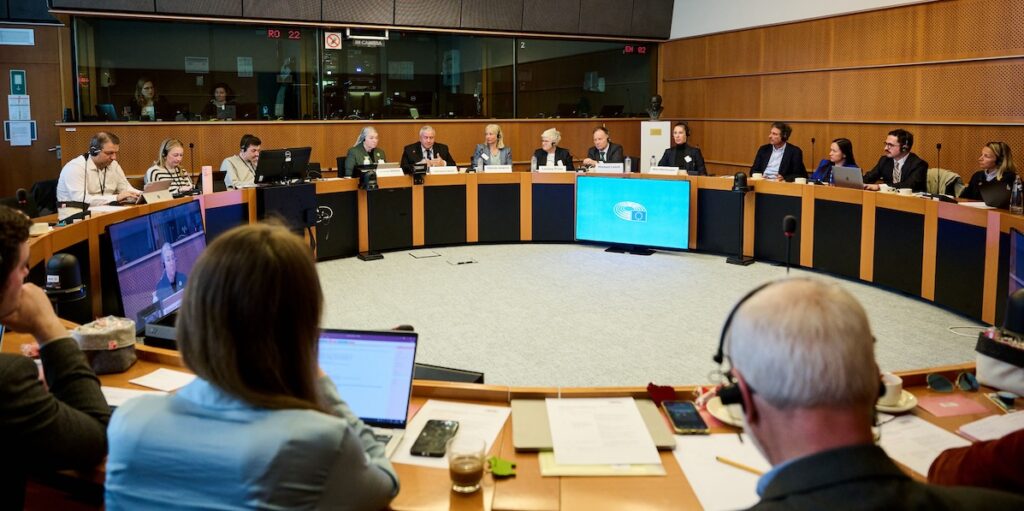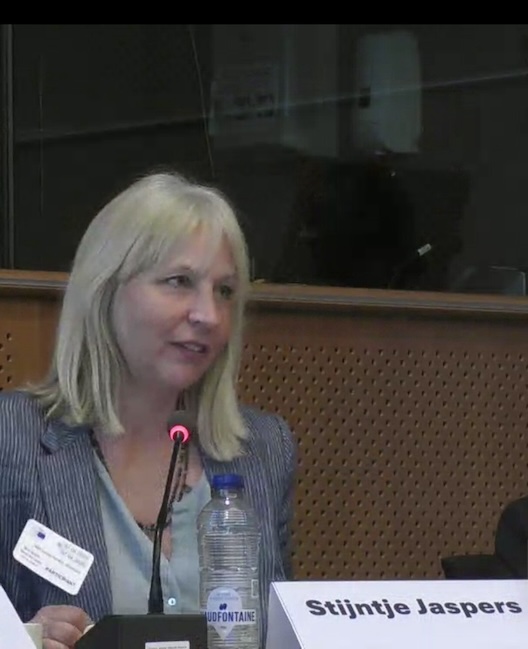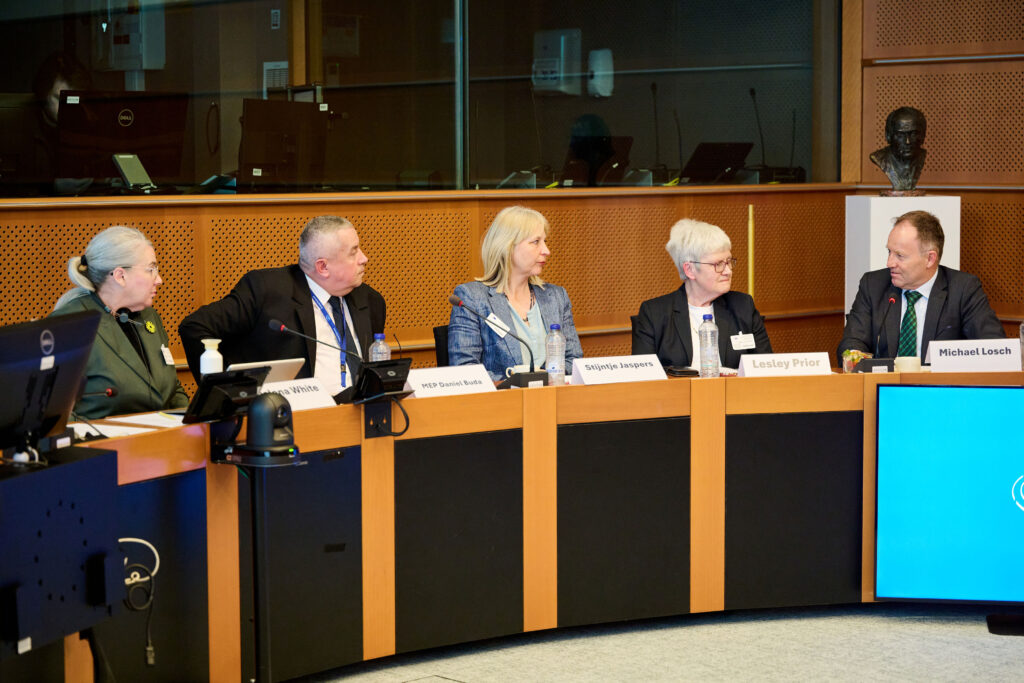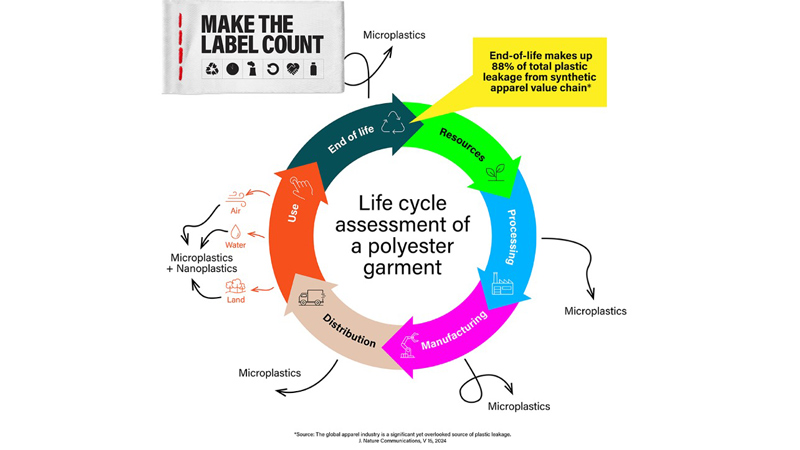
Background
Textile legislation is evolving rapidly, yet policy discussions often overlook the very foundation of the industry – the fibres themselves. What we wear every day has a direct impact on our planet. This roundtable explores the environmental benefits of agricultural fibre production and its role in shaping a more sustainable fashion industry. Bringing together leading EU policy stakeholders, the discussion highlights the environmental impacts of different fibres, how fair labelling practices can provide clarity, and what policymakers must consider to ensure a sustainable textiles sector.
Panelspeakers
MEP Daniel Buda (Vice-Chair of the European Parliament’s Agriculture Committee), Michael Losch (Policy Officer at the European Commission’s Directorate-General for Agriculture), alongside producers and natural fibre experts including Lesley Prior (Tellenby Merino Stud), Elke Hortmeyer (Bremen Cotton Exchange), and Stijntje Jaspers (Fibershed Nederland). We were also pleased to welcome Charlotte Lemay, a French content creator and founder of the Aware Collective, who brought key questions from her online community into the debate to better represent the voices of consumers.
The event brought together around 40 in-person participants, including representatives from the European Commission, the European Parliament, industry associations and NGOs, to discuss the environmental benefits of natural fibres and the importance of recognising their positive contributions in EU sustainability policies, there were also online listeners.
Q&A with Stijntje Jaspers
Can you share examples of successful initiatives that have demonstrated the potential of agricultural fibres in sustainable fashion?

Fibershed is a global movement of over 70 regional networks of entrepreneurs who work to grow and produce regenerative textiles — materials that not only reduce harm but actively benefit people, planet, and agriculture. Sixteen of these networks are based in Europe, where we collaborate through a shared European Hub. In the Netherlands, for example, several companies now work with wool from heath sheep and meat sheep — wool that was once considered waste. Today, it’s being used again for clothing, carpets, upholstery, and insulation in winter jackets and furniture. These sheep play an important role in managing the landscape and maintaining healthy ecosystems.
Other natural fibers being revived include flax and hemp — crops with deep roots in European farming traditions. We’re seeing new flax-to-linen initiatives, and we’ve launched a pilotproject to grow and process hemp for textiles. These crops are good for the land: they improve soil health, support biodiversity, and help capture carbon.
This reconnects fashion directly with farming. It creates new markets for farmers, encourages diverse and resilient cropping systems, and supports local economies. And because the resulting textiles are high-quality, long-lasting and biodegradable, they can eventually (after all the steps of the Circular R-Ladder) return to the soil — feeding the next cycle of fiber production in a true regenerative system, without waste.
Perhaps most importantly, this approach offers an opportunity to build strong, community-based micro-enterprises rooted in place. It revitalizes Europe’s rich textile heritage — a heritage that has been largely ignored in the EU’s textile strategy, despite its deep connection to our agricultural future.
How do you see consumer awareness evolving around sustainable textiles, and what more needs to be done to drive demand for natural fibre-based clothing?
I’ve worked in leading creative roles in the Dutch fashion industry for over 25 years. You’d think I understood fabrics — and yes, I knew polyester comes from oil, cotton from plants, wool from sheep. But only after stepping away from the system did I truly see what I’d missed: the deep connection between fashion and agriculture. The industry is hidden from view — production happens far away, while we enjoy the end product. We don’t see the damage done to people and the planet, and we certainly don’t pay the real cost. When we rebuild local, small-scale, and transparent textile chains, something shifts — farmers, designers, makers and producers regain pride in their craft, and consumers better understand the value of what they wear. Once people know where their textiles come from and how they’re made, they tend to look at labels differently and make more conscious choices.
But most people, especially young ones, still lack this knowledge. That’s why Fibershed works to raise awareness, particularly among teenagers, through books and school programs. We also advocate for clearer labeling and fair pricing — because right now, natural fibers that benefit ecosystems and human health often cost more than polluting synthetics made from oil. Fibershed facilitates local collaborations around the world for natural fibers and textiles, showing how deeply we rely on nature. We’ve been forgetting that our survival as a species has long depended on these remarkable fibers — with properties we still can’t match synthetically. Yet today, many of these natural materials are even labelled unsustainable by current measuring tools, which only shows how far we’ve drifted from nature. Fibershed offers a chance to truly see and understand that connection — and to expand the availability and diversity of natural textiles, reconnecting fashion with farming, and people with the ecosystems that sustain them.
What challenges are small-scale natural fibre producers facing and what can policymakers do to help?
Policymakers should start by recognizing that agriculture offers much more than food — fibers and textiles are crucial too. However, for this to succeed, infrastructure is needed for growing, harvesting, collecting, and processing fibers into textiles. Local governments can help by providing funding to develop the natural textile sector, including all aspects of the processing chain.
Most natural fiber producers in Europe are SMEs, and they face challenges with increasing bureaucracy and admin costs due to tighter regulations. These costs should match the size of the business, and the risks involved. If not, small producers may be forced out of business. Policy should also recognize the ecosystem services that sheep and bast fibers provide, such as improving biodiversity and soil health, and factor these into subsidy decisions. It’s crucial not to burden them with misleading metrics like the PEF, which misrepresent the environmental benefits of responsible and regenerative agriculture and livestock farming.
Additionally, there are significant benefits to reinvigorating our textile heritage. This ‘heritagisation’ is already growing in the slow food movement, and with the right policies, it could extend to textiles and fashion. Supporting local crafts, resilient micro-enterprises, and community well-being would restore Europe’s strength in design and innovation. Learning from the past while integrating modern technologies offers boundless opportunities. After all, our great-grandparents were truly circular.

In general the discussion highlighted several themes of great importance for our joined mission, including the need for EU legislation to fairly reflect the environmental properties of natural fibres such as their biodegradability and circularity. Speakers emphasised the importance of ensuring that EU tools such as the Product Environmental Footprint (PEF) accurately reflect the full environmental value of natural fibres. They expressed clear concern that, if poorly developed, such methodologies risk misrepresenting agricultural fibres and undermining their role in a truly circular textile economy.
MEP Buda highlighted the need to reduce administrative burdens on farmers and the importance of advocating for policies that incentivise sustainable fibre production through greater support at Member State level. Michael Losch reaffirmed the Commission’s commitment to promoting bio-based materials, noting that the upcoming revision of the EU Bioeconomy Strategy will be a key opportunity to do so. He encouraged stakeholders to actively contribute to the public consultation. Panellists also emphasised the role of natural fibres in supporting small communities and rural economies, warning against the challenges they face in a market increasingly dominated by synthetic textiles.
Reflection
This event was an effective way to build and strengthen relationships with the European Parliament’s Agriculture Committee and the European Commission’s DG of Agriculture, which will be important for future engagement around the Bioeconomy Strategy. It also served as a good platform to continue the conversation around the need to improve the PEF Methods.
Almost at the same time the Technical Secretariat finalised the PEFCR and handed it over to the European Commission. This means that the next months are very important as there is hope that the commission will include impacts such as microplastics, biodiversity and a better circularity indicator. That’s why we ask you to sign the MTLC Petition to Protect Nature from Fast Fashion!
The European Commission is shaping new textile sustainability policies – but natural fibres risk being left behind. If these policies don’t reflect the true environmental benefits of natural fibres, they could mislead consumers and threaten the livelihoods of farming communities worldwide.
The Make the Label Count campaign is calling for:
- Fair recognition of natural fibres in sustainability policies
- Science-based environmental criteria to prevent greenwashing
- A responsible fashion model that prioritises biodegradable, renewable, and recyclable fibres
Help ensure a fair future for natural fibers. Sign and share the petition today: https://www.makethelabelcount.org/petition
